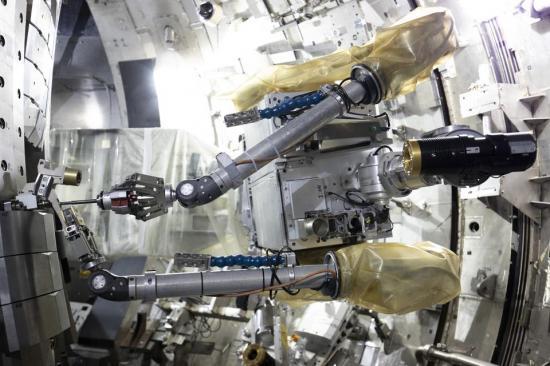JET's Remote Handling upgrades among the world’s most advanced
26th February 2024

Upgrades implemented in the Remote Handling Control Room at JET have transformed it into one of the most advanced robotics and remote handling systems globally.
The Remote Handling Control Room at the United Kingdom Atomic Energy Authority (UKAEA) has undergone a significant upgrade, enhancing its crucial role in delivering the highest standards in fusion repurposing and decommissioning projects.
The upgrade now provides one of the most advanced robotics and remote handling systems in the world for the Joint European Torus (JET).
Commenting on the upgrade, Steve Gilligan, the Programme Sponsor and Head of Decommissioning and Handling, said: "The Remote Handling System is absolutely fundamental to the repurposing and decommissioning of JET. Due to safety precautions, personnel have not be able to enter the tokamak for over 30 years. Further, JET's plasma operations over the last few years have made it a particularly challenging environment to work with.
"We have refurbished the system so that it's fit for the future. This has taken huge effort, more than 400,000 hours have been invested in its upgrade, which includes research and development, installation, testing, commissioning and training."
The remote handling operators will be responsible for eventually removing over 4,000 individual tiles and components from JET’s inner vessel, including some that weigh several hundreds of kilogrammes.
The Remote Handling Control Room upgrades include a complete overhaul of MASCOT, a highly dextrous remote manipulator with haptic feedback, that allows the operator to feel every action from carrying a new component to tightening a bolt.
JET is based at UKAEA’s Culham Campus in Oxfordshire. It concluded its plasma operations at the end of December 2023.
JET has moved to the next phase of its life cycle for repurposing and decommissioning, representing an opportunity to develop new technologies and skills in line with the Government’s published fusion strategy.
The critical testing of the inside of the tokamak is now underway and will continue throughout Spring and Summer of 2024. This process involves retrieving 60 key samples for further scientific analysis.
